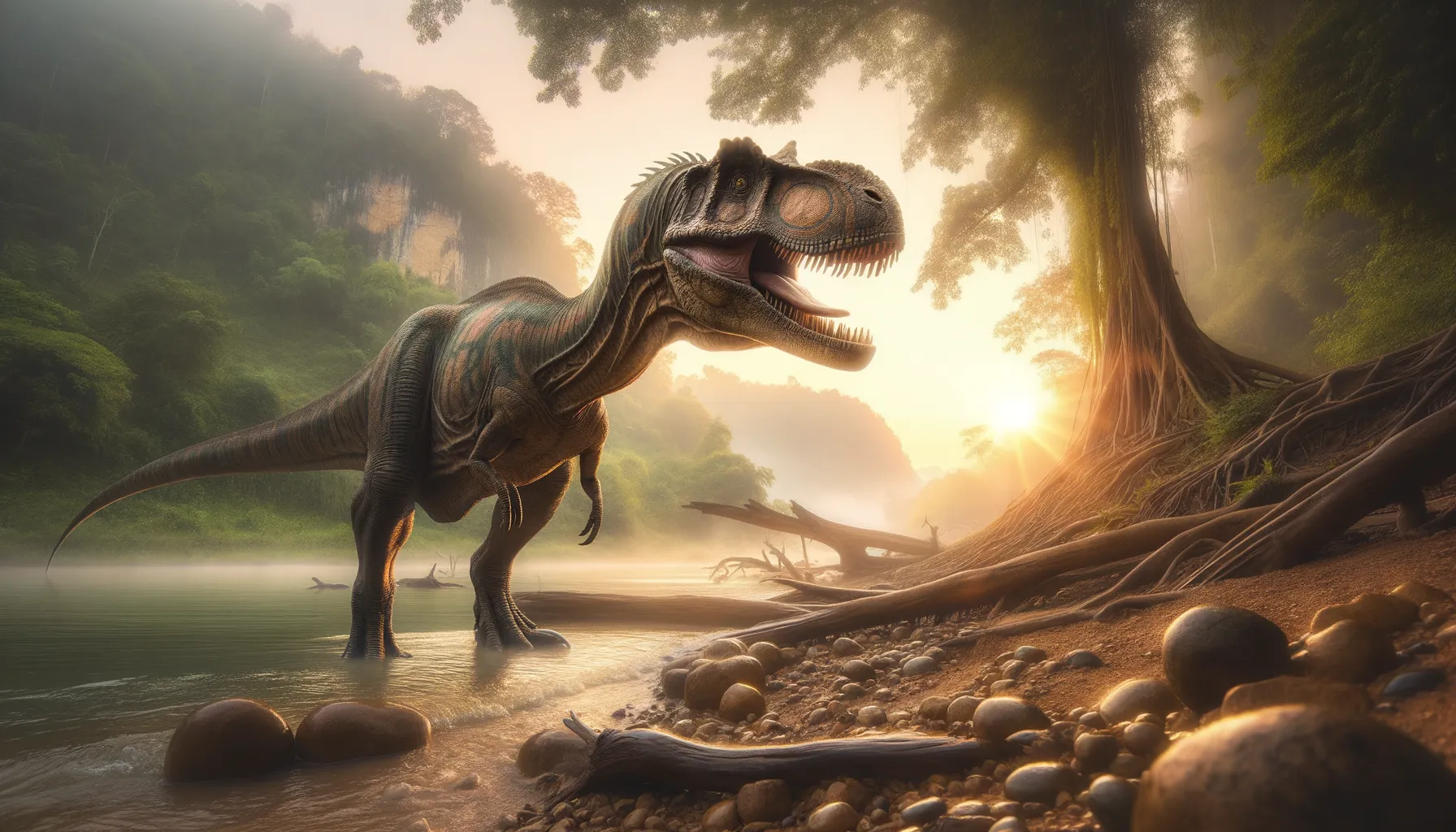
Sirindhorna
A plant-eater of the ancient Asian lands.
Period
Cretaceous
Length
Length was approximately 6 meters from head to tail.
Height
Estimated height was about 2 meters tall.
Weight
It weighed around 800 to 1000 kg.
Sirindhorna was a dinosaur that lived during the Cretaceous period and was discovered in Thailand. This medium-sized dinosaur was part of the group known as hadrosaurids, or duck-billed dinosaurs, and was herbivorous. Distinct for its jaw and teeth structure, Sirindhorna provides insights into the diversity of plant-eating dinosaurs of its time. Its discovery has helped paleontologists understand more about the distribution and evolution of dinosaurs in Asia.
Diet
Sirindhorna was herbivorous, relying primarily on a diet of plants. Its teeth and jaw structure were adapted for grinding and chewing tough vegetation.
Hunting
As a plant-eater, Sirindhorna did not hunt for food. Instead, it likely foraged for plants and moved in herds to find ample feeding grounds.
Environmental challenges
During its time, Sirindhorna faced environmental challenges such as changing climates and vegetation due to periodic climatic shifts. It needed to adapt to different plant types as the availability of certain species fluctuated. The presence of predators would also have posed a threat, requiring vigilance and group behavior for protection.
Speed
Sirindhorna probably moved at a moderate pace.
Lifespan
Its lifespan likely ranged 15 to 20 years.
First discovery
Discovered in Thailand in 2015.
Fun Facts
- Sirindhorna is a dinosaur that lived during the Early Cretaceous period, around 125 million years ago.
- It was named in honor of Princess Maha Chakri Sirindhorn of Thailand, a supporter of scientific research.
- Sirindhorna belonged to the group of dinosaurs called Iguanodontians, which were herbivorous or plant-eating dinosaurs.
- Fossils of this dinosaur were discovered in northeastern Thailand.
- Sirindhorna is thought to have walked on both two and four legs, similar to other Iguanodontians.
- It featured a distinctive jaw structure that helped it to chew tough, fibrous plants.
- The discovery of Sirindhorna has provided valuable insights into the diversity of dinosaurs in Asia during the Early Cretaceous.
Growth and Development
Sirindhorna likely underwent rapid growth during its juvenile years to reach maturity quickly, a common trait among many dinosaurs. This fast growth rate helped improve their survival odds in a landscape filled with predators. Its development relied heavily on a diet rich in available vegetation to fuel this growth.
Habitat
Sirindhorna inhabited what is now modern-day Thailand, which was lush and vegetative during the Cretaceous. The area likely featured rivers and rich plant life, ideal for supporting large herbivores. This habitat supported diverse species, contributing to the region's ecological richness.
Interaction with other species
Interactions likely included avoiding predatory dinosaurs which shared the habitat. Sirindhorna may have also coexisted with various herbivorous species, possibly competing for the same food resources. Being in groups could help detect predators and maintain feeding territories.
Natural lifespan
Sirindhorna's natural lifespan was likely around 15 to 20 years.
Reproduction
Reproduction involved laying eggs in nests, possibly in communal nesting sites to better protect offspring. Like many dinosaurs, Sirindhorna's young may have received care from parents until they could fend for themselves.
Social behaviour
Sirindhorna likely exhibited social behavior, moving and foraging in herds for safety and efficiency. Such herding would enhance protection against predators and improve social interaction, crucial for survival.
Fossil locations
Fossils of Sirindhorna have primarily been found in Thailand, highlighting the region's rich Cretaceous period dinosaur fauna. These discoveries have improved understanding of hadrosaurid distribution across Asia.
